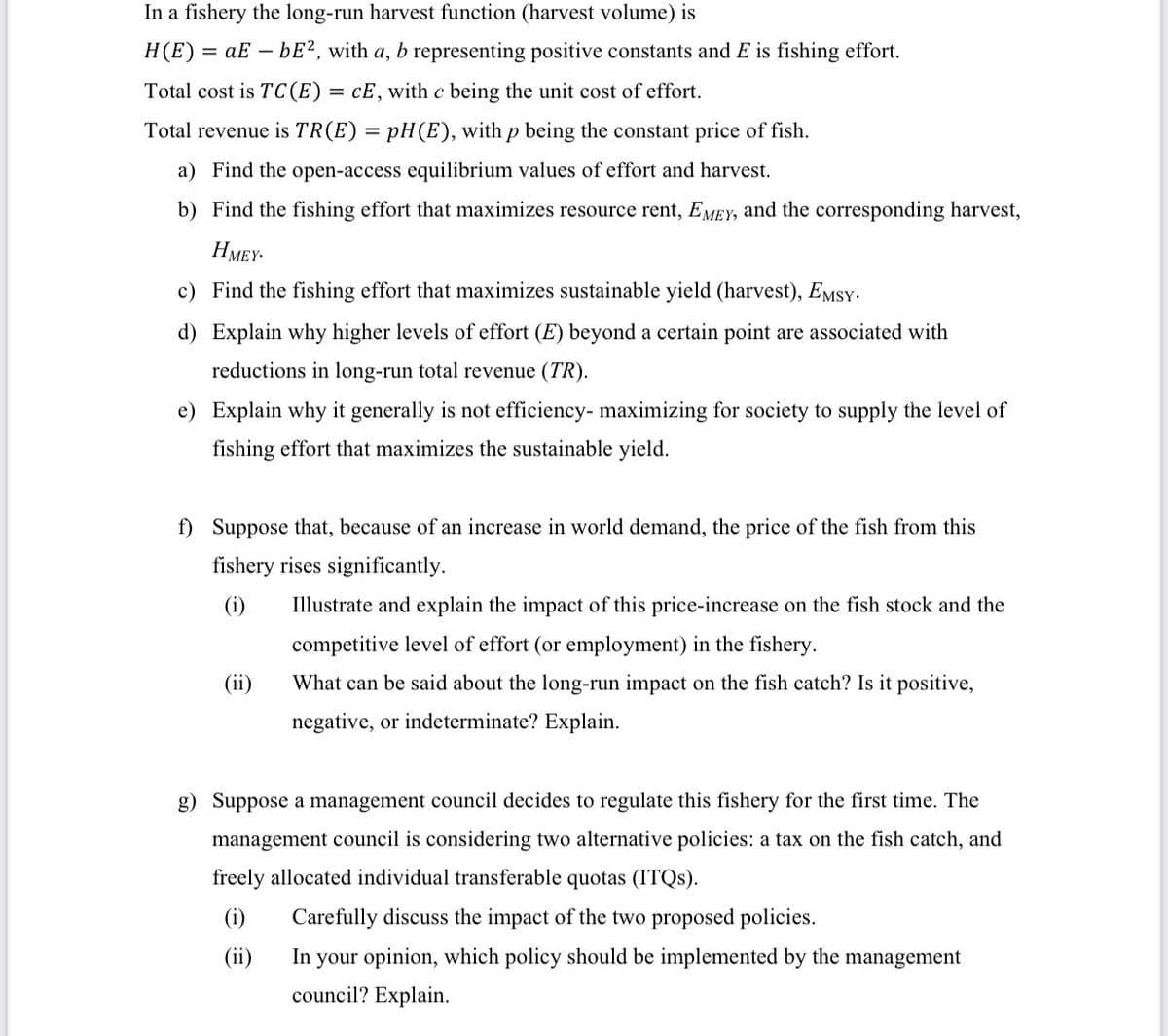Chapter6: Systems Of Equations And Inequalities
Section6.5: Systems Of Inequalities
Problem 9ECP
Related questions
Question
Please answer part b and provide steps

Transcribed Image Text:In a fishery the long-run harvest function (harvest volume) is
H(E)
= aE – bE2, with a, b representing positive constants and E is fishing effort.
Total cost is TC(E)
= cE, with c being the unit cost of effort.
Total revenue is TR(E) = pH(E), with p being the constant price of fish.
a) Find the open-access equilibrium values of effort and harvest.
b) Find the fishing effort that maximizes resource rent, EMEY, and the corresponding harvest,
HMEY-
c) Find the fishing effort that maximizes sustainable yield (harvest), EMSY-
d) Explain why higher levels of effort (E) beyond a certain point are associated with
reductions in long-run total revenue (TR).
e) Explain why it generally is not efficiency- maximizing for society to supply the level of
fishing effort that maximizes the sustainable yield.
f) Suppose that, because of an increase in world demand, the price of the fish from this
fishery rises significantly.
(i)
Illustrate and explain the impact of this price-increase on the fish stock and the
competitive level of effort (or employment) in the fishery.
(ii)
What can be said about the long-run impact on the fish catch? Is it positive,
negative, or indeterminate? Explain.
g) Suppose a management council decides to regulate this fishery for the first time. The
management council is considering two alternative policies: a tax on the fish catch, and
freely allocated individual transferable quotas (ITQS).
(i)
Carefully discuss the impact of the two proposed policies.
(ii)
In your opinion, which policy should be implemented by the management
council? Explain.
Expert Solution
This question has been solved!
Explore an expertly crafted, step-by-step solution for a thorough understanding of key concepts.
This is a popular solution!
Trending now
This is a popular solution!
Step by step
Solved in 2 steps

Recommended textbooks for you


Linear Algebra: A Modern Introduction
Algebra
ISBN:
9781285463247
Author:
David Poole
Publisher:
Cengage Learning


Linear Algebra: A Modern Introduction
Algebra
ISBN:
9781285463247
Author:
David Poole
Publisher:
Cengage Learning